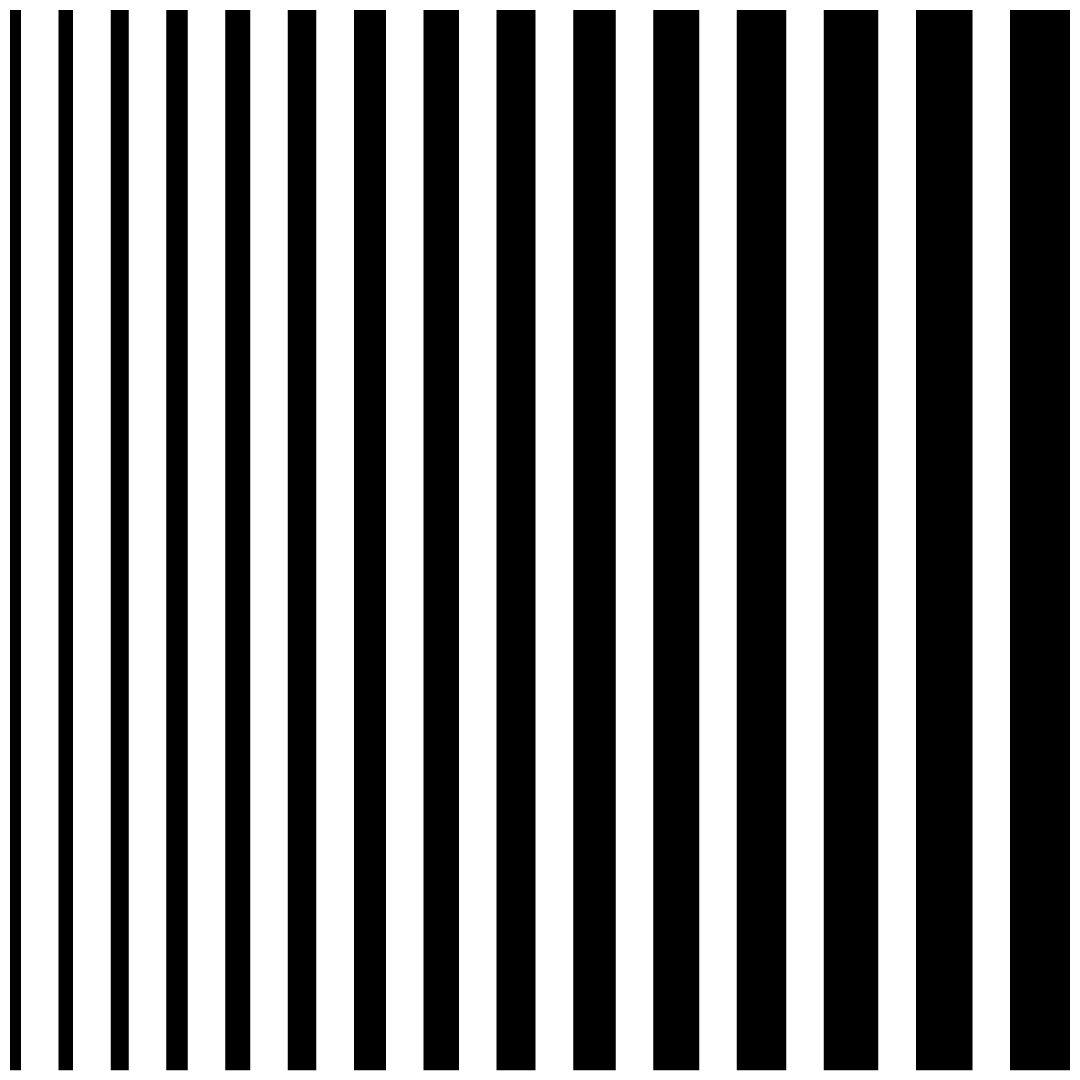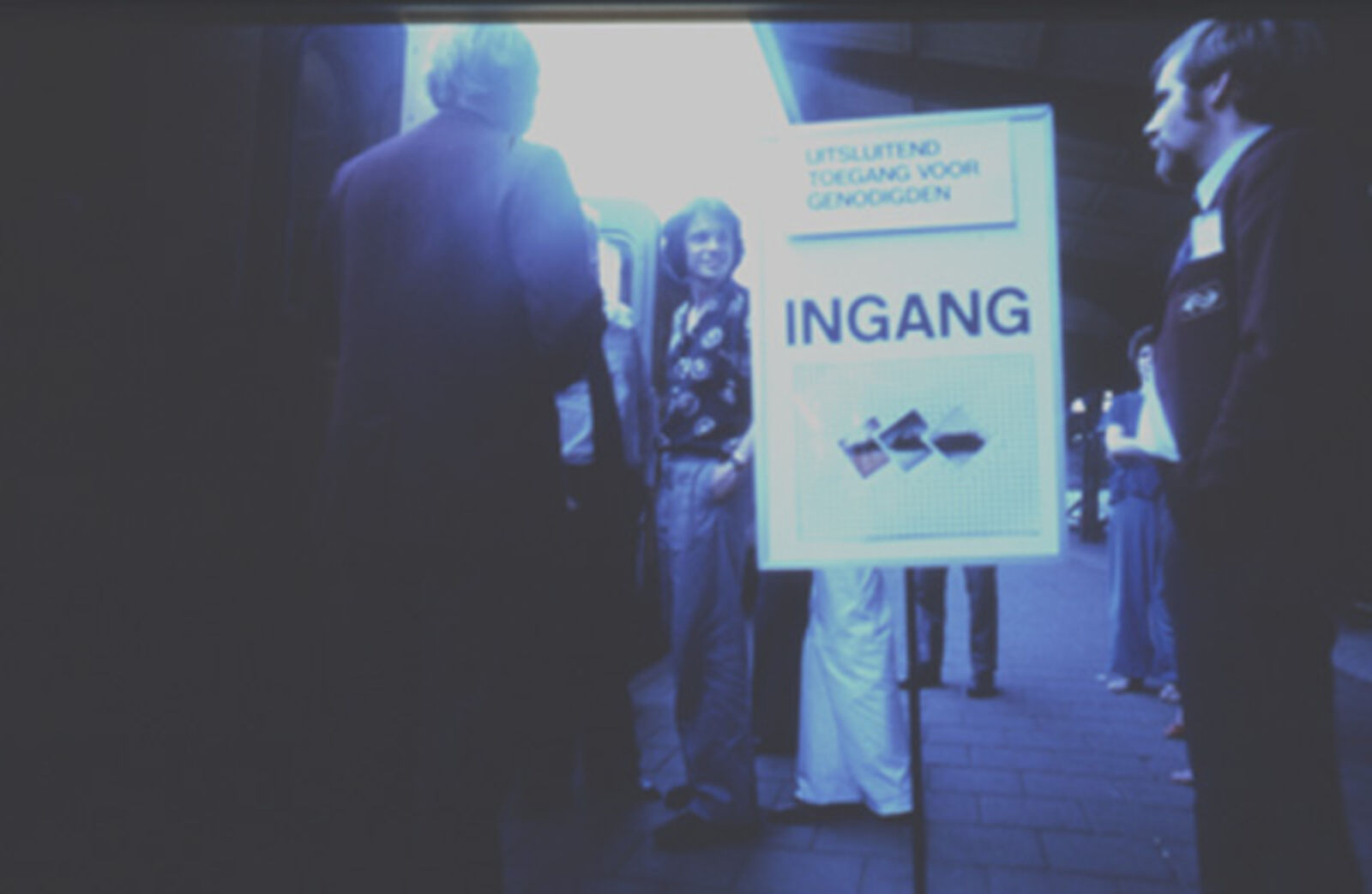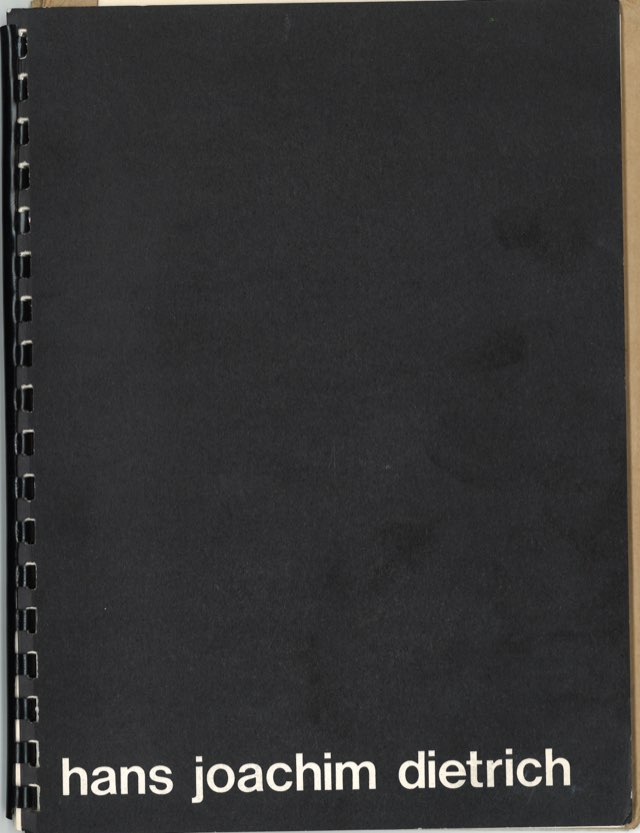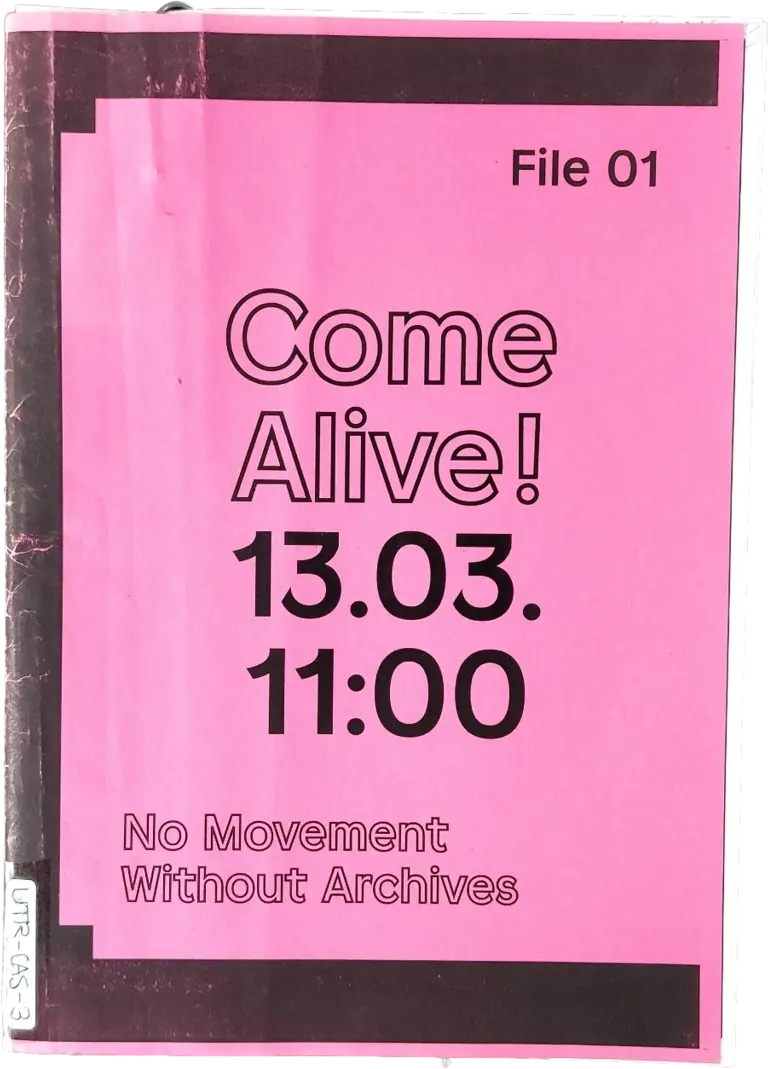Krzysztof Wodiczko "Krzysztof Wodiczko"
15.09–29.10.1995
de Appel, Nieuwe Spiegelstraat 10, Amsterdam
de Appel, Nieuwe Spiegelstraat 10, Amsterdam
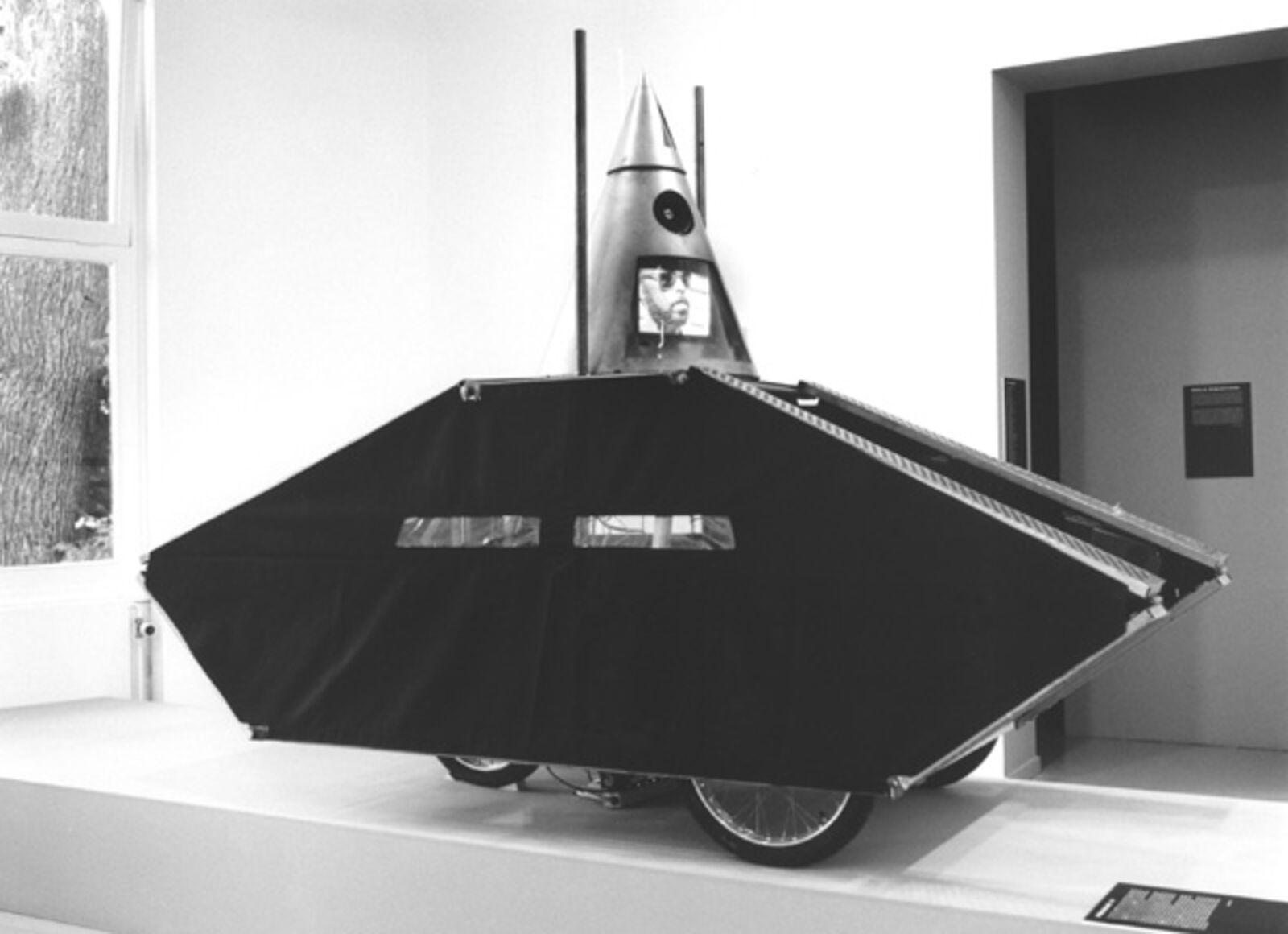
Poliscar, 1991
© Cary Markerink, Amsterdam
© Cary Markerink, Amsterdam
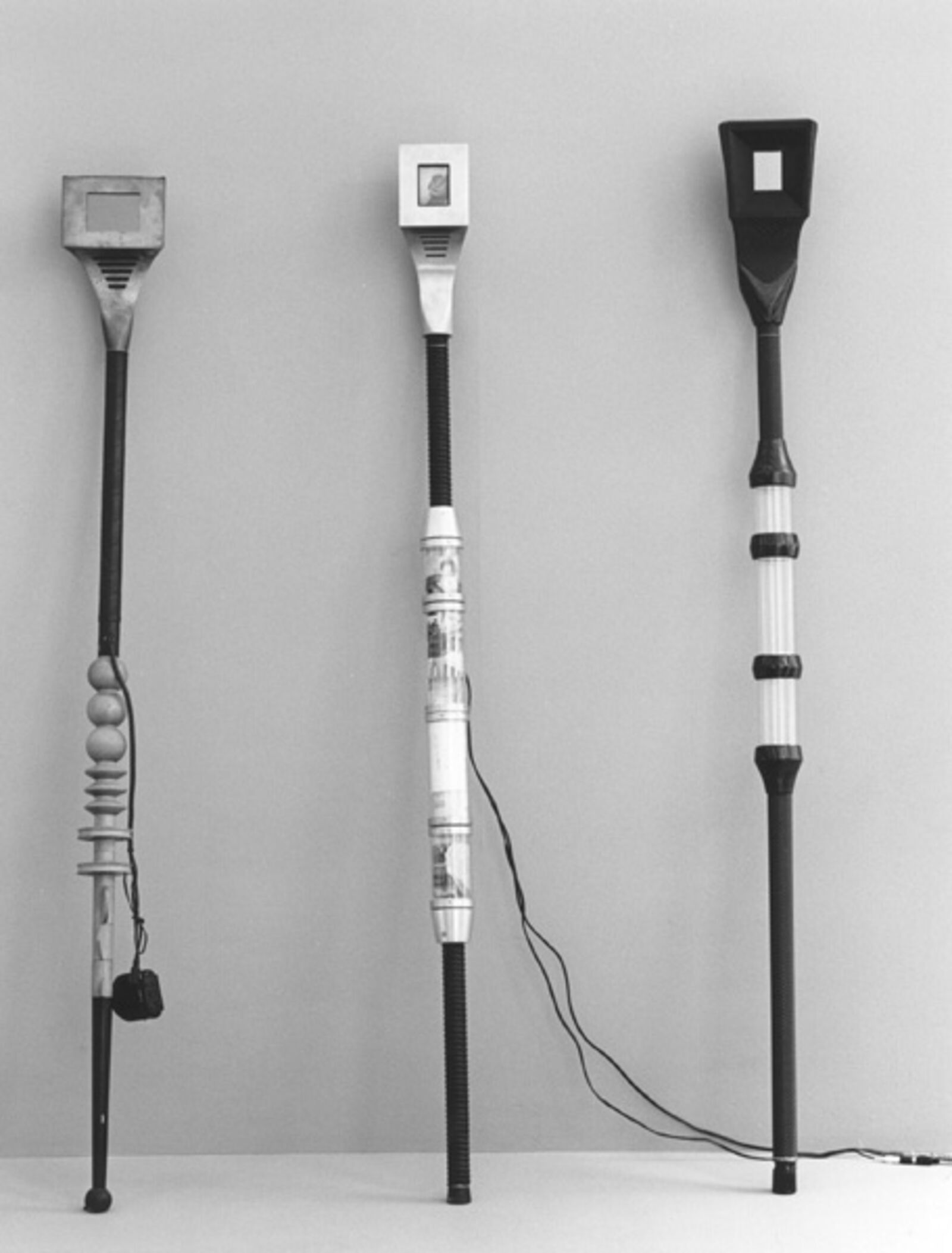
Alien staff, 1992-'93
© Cary Markerink, Amsterdam
© Cary Markerink, Amsterdam
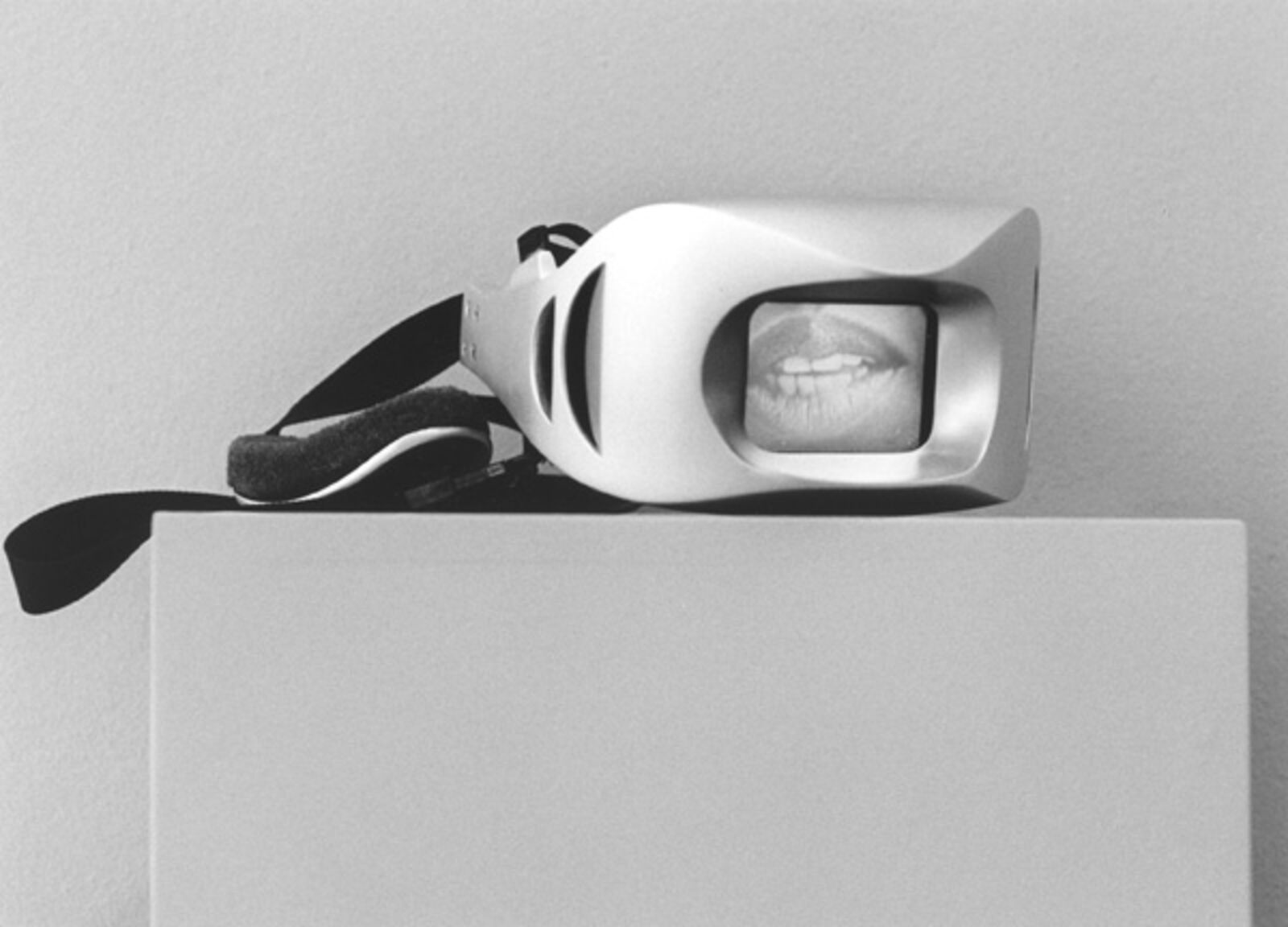
Porte parole, 1995
© Cary Markerink, Amsterdam
© Cary Markerink, Amsterdam
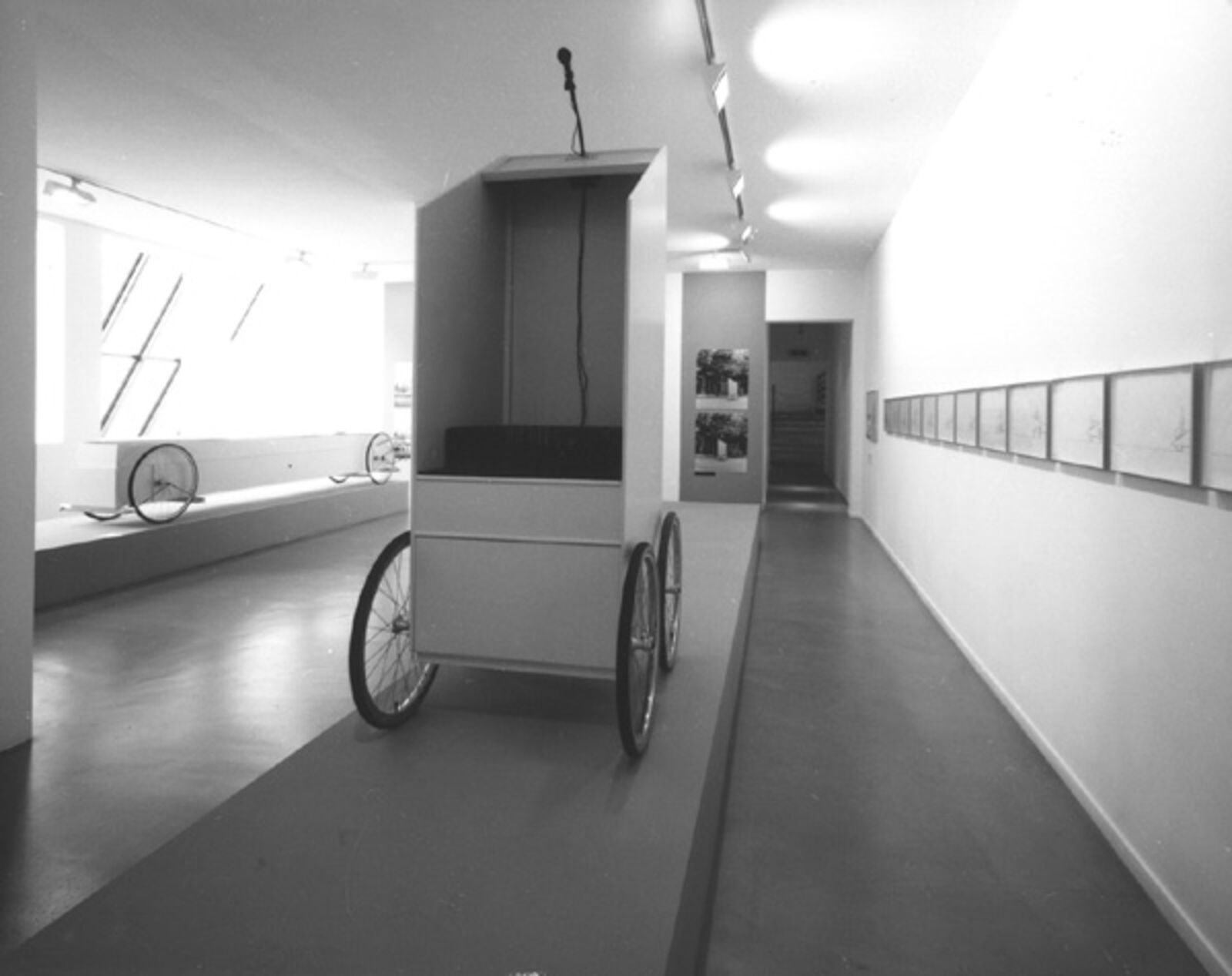
f.l.t.r.: Vehicle, 1971-'73, Vehicle podium, 1973-'79
© Cary Markerink, Amsterdam
© Cary Markerink, Amsterdam
From September 15 through November 5 1995 De Appel Foundation presented an exhibition by Krzysztof Wodiczko. The exhibition was comprised of works dating from the beginning of the artist's career to a work produced especially for De Appel. It was the first comprehensive exhibition of Wodiczko's oeuvre in Europe since Wodiczko's Instruments, Projections, Vehicles produced by the Fundació Tàpies, Barcelona in 1992. Wodiczko began his career as an artist in 1968, after completing his studies in industrial design at the Academy of Fine Arts in Warsaw, where he worked for an industrial designer producing electronic equipment. In 1969, while practising as an artist and starting his teaching career in the Academy of Fine Arts in Warsaw, he made an art work, entitled Personal Instrument, which was to have particular significance in his entire artistic production until today, since it is a light sensitive instrument designed to conduct the artist through his environment. Wodiczko's first group exhibition was the Biennale des Jeunes held in Paris in 1969. His first individual exhibition was in 1972 in the Wspolczesna Gallery, Warsaw. The early works of Wodiczko shown in the exhibition included the very first of a series of works generically known as Vehicles. Vehicle (1972-'73) is conceived to be mechanically activated by walking: a person walking along the vehicle would cause it to move slowly in a linear manner. This work was conceived in the context of Poland in the 1970s. The exhibition illustrated the importance that the political and social context has in Wodiczko's works by presenting, not only major works of this artist but also, the relevant original drawings and sketches, photographs and videos documenting their 'use' as active elements in public space. In the early 1970s, Wodiczko produced many works which show the same linear aspect as the Vehicle (1972-'73) however in different ways, making the meaning of the line explicit in imagery drawn from press and propaganda for example. Certain studies on the perception of line in space were also made during this period and eventually a series of slides, entitled Guidelines were produced in 1977, a year after the artist immigrated to Canada from Poland.
In Toronto in 1980, Wodiczko began a series of works that were to make him a renowned artist of the public sphere: the projections of images from transparencies onto monuments and strategic edifices. A series of slides representing many of these public manifestations could be seen in the exhibition. In 1983, Wodiczko moved to New York and four years later he produced the Homeless Vehicle project. These vehicles were designed for homeless persons and each of the four models that Wodiczko designed between 1987 and 1989 are adapted to the environment in which they were to be displayed: essentially in the streets of Manhattan and Brooklyn. This intended to bring about a confrontation between homeless persons accompanying the 'vehicles' through their city and the general public. Wodiczko never conceives of his work as an answer to political and social problems but as a reflection on the environment in which they are shown and as the revelation of human factors in jeopardy. Poliscar (1991), Alien Staff (1992-'95) and Porte-Parole (1995) are all important works which represent the intense interest of this artist in the status of the 'foreigner', the impossibilities that the extraneous individual has to face in society.
(Based on the press release of De Appel)
Catalogue:
Krzysztof Wodiczko, Amsterdam 1996. Text: Saskia Bos, Dorota Monkiewicz, Krzysztof Wodiczko. Dutch & English. Bio- & bibliography included. 88 Pages: 36 duotone, 16 x 22 cm. Softcover. Design: Tessa van der Waals. ISBN 90 73501 28 8. € 16,-.
See also
